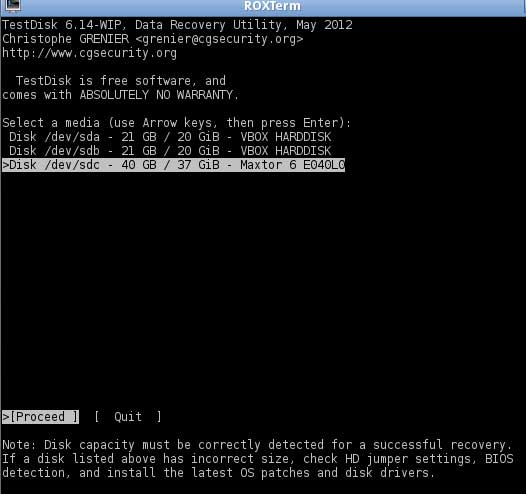

- #How to format seagate 1.5tb with win xp drivers#
- #How to format seagate 1.5tb with win xp update#
- #How to format seagate 1.5tb with win xp series#
WorldBench uses scripting to step through a series of tasks in common Windows applications. If you have questions about our methods, hit our forums to talk with us about them. Vertical refresh sync (vsync) was disabled for all tests.Īll the tests and methods we employed are publicly available and reproducible.

The test systems’ Windows desktop was set at 1280×1024 in 32-bit color at an 85Hz screen refresh rate.
#How to format seagate 1.5tb with win xp drivers#
Radeon X700 Pro 256MB with CATALYST 5.7 drivers The drive with its original firmware is listed simply as the Barracuda 7200.11 1.5TB while results from the new firmware rev have an (SD1A) added onto the end.Īll tests were run three times, and their results were averaged, using the following test system. We have two sets of results for the ‘cuda. Performance data from such a daunting collection of drives can make our bar graphs a little hard to read, so we’ve colored the bars by manufacturer, with the 1.5TB Barracuda appearing in a brighter green than the rest of Seagate’s drives. The Caviar GP is the original GreenPower drive, model number WD10EACS, while the Caviar Green is the new WD10EADS derivative. Note that we have two versions of Western Digital’s GreenPower desktop Caviar. That’s bad news for conspiracy theorists, but good news for ‘cuda owners afflicted by the freezing bug. With few exceptions, the performance of the Barracuda 7200.11 1.5TB with the new SD1A firmware is all but identical to that of the drive with its original SD17 firmware. I won’t bother running through the graphs individually because, well, there isn’t much to see. We’d seen forum and comment claims of degraded performance, but couldn’t find much evidence in our own test results, which are provided on the following page.
#How to format seagate 1.5tb with win xp update#
Seagate should have at least made the update easier to download by putting a direct link to it in forum posts discussing the problem.Īnyway, we ran our ‘cuda through the usual gauntlet of performance, noise, and power consumption tests not quite sure what to expect. I spent 25 minutes on hold before finally giving up, and another 10 minutes in the online support chat section of Seagate’s website before getting a download link for the firmware update. Here’s a tip: don’t bother calling the support hotline. You see, Seagate doesn’t post firmware updates on its website or even in its support forums-you have to get in touch with the company’s support team and have them send you the necessary update. Installing the updated firmware was easy enough, but actually getting our hands on it proved more problematic than it should have been. Curious to see whether this was the case, we applied Seagate’s new SD1A firmware to our production ‘cuda and ran the drive through a battery of tests to see how its performance compared with the original SD17 firmware. As is often the case with new firmware releases, there was some concern that in fixing the freezing problem, Seagate had to dial back the Barracuda’s performance. Unfortunately, it seems that early versions of the 1.5TB Barracuda were stricken with random freezing, causing Seagate to issue a firmware update to resolve the issue. The one-point-five wasn’t the fastest drive overall, mind you, but with a very reasonable $130 street price and a then-five-year warranty, it was a pretty good deal for those looking to maximize storage capacity. We reviewed the drive last year, and found it to be quite speedy in straight-line throughput drag races.

Seagate became the first manufacturer to break the terabyte mark with its Barracuda 7200.11 1.5TB.


 0 kommentar(er)
0 kommentar(er)
